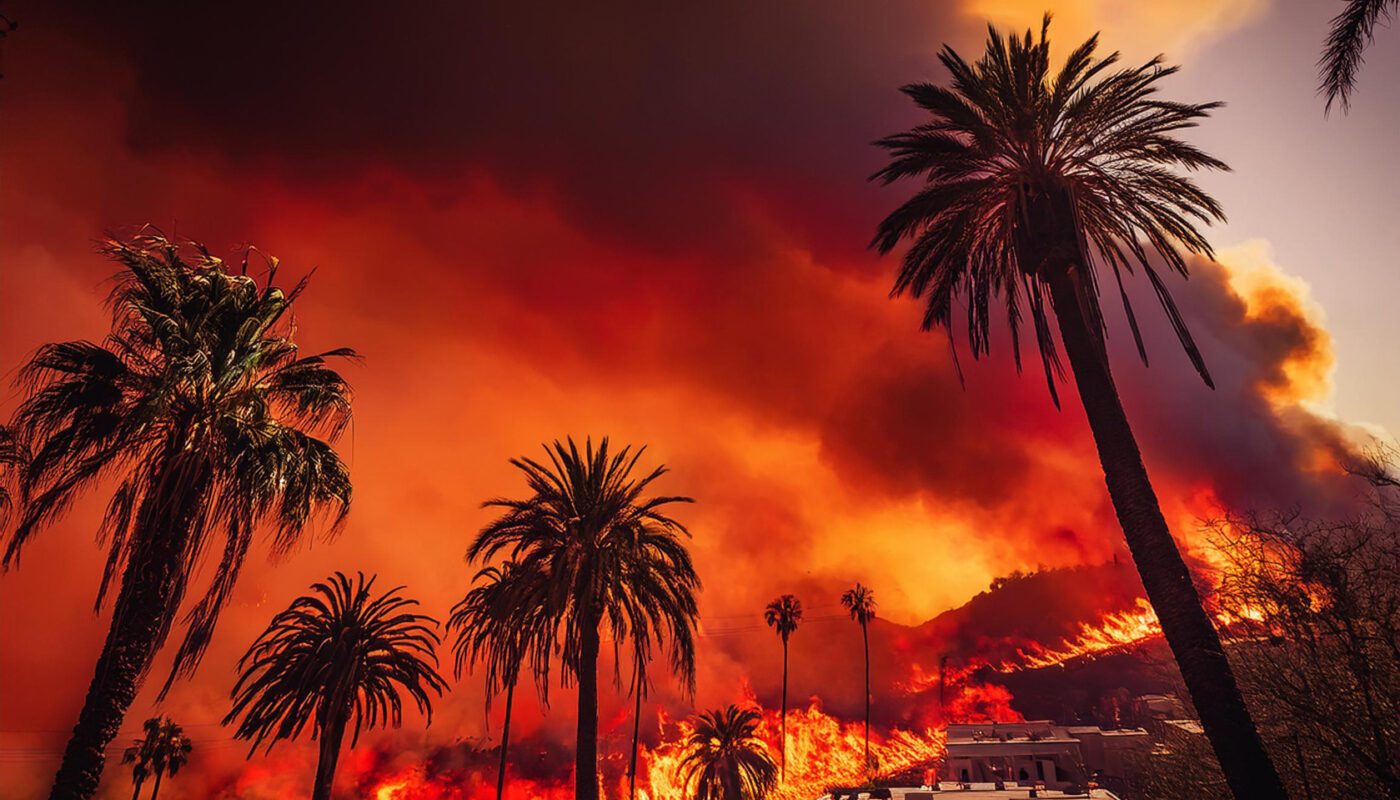An ongoing struggle against climate change has been causing states in the United States to experience never-before-seen weather changes, including wildfires, extreme cold and droughts.
Within the past two weeks, wildfires in parts of California broke out and engulfed dozens of infrastructures and forests. What started from a dark cloud of smoke in Palisades, Calif. quickly became a deadly fire that covered 200 acres, according to NBC Los Angeles.
Evacuation orders were sent out in a hurry by firefighters in the area.
“[The fires] could be seen burning both sides of the road on Palisades Drive,” said Natalie Osuna, a reporter for NBC Los Angeles.
Shortly after, more fires engulfed other parts of California with chaos and destruction following. According to Cal Fire, there have been 28 fatalities with more than 57,000 acres burned and 16,240 infrastructures destroyed. There have also been 283 cases of wildfires reported.
While the official cause of the fires remains unknown, NBC News reports that “drought-like conditions and powerful offshore winds” may have assisted the fire’s upheaval.
Alongside the heat of wildfires, reports of extreme cold have been hitting the southern region of the states.
The Guardian said strong winds from the Arctic have been causing electrical outages in tens of thousands of homes in the northwest, snow in the southern states and freezing rain in the southern plains and Appalachian Mountains.
States that do not usually experience cold weather conditions, like Florida, have felt this unusual harshness. The cause for the cold is due to the polar jet stream — a stream that runs between the boundaries of the Arctic and temperate air — dipping south and carrying Arctic air back up to typically warmer regions, according to Mathew Barlow, a professor of climate science at the University of Massachusetts Lowell.
Barlow said colder temperatures does not mean human-caused climate change is reversing; however, Barlow and his colleagues have evidence to suggest that “Arctic changes associated with global warming have increased the likelihood of such vortex disruptions.”
There has been a decrease in the number of cold temperatures occurring in recent years, unrelated to global warming.
“While the world can expect fewer of these severe cold events in the future, many regions need to remain prepared for exceptional cold when it does occur,” said Barlow.
There are many ways to combat extreme cold weather.
Wrapping up in blankets and wearing light jackets, such as hoodies or sweatshirts, can keep the body warm indoors. Wearing socks can prevent cold feet against hardwood floors or other areas without carpeting.
Another common suggestion is to simply bundle up for outdoor activity. Wearing items made to keep warm, like gloves, scarves and coats, is the easiest way to fight against the effects of low temperatures.
Because of societal pressure to blend in with others, university students are often seen without wearing any coat outside, even with temperatures dropping to the negatives.
In a CBC interview with Kyle Ganson, a specialist in adolescent research at the University of Toronto, said there are “a range of emotional and biological factors at play.”
Because of puberty and the constant development of adolescents’ bodies, it islikely “uncomfortable to wear a larger jacket.”
“Another factor is brain development, particularly that of the prefrontal cortex,” said Ganson.
This decision-making part of the brain does not develop until age 25, which causes adolescents to have less rationality and ignore the potential risk of not wearing a coat.
Refusing to wear these articles of clothing, however, can increase chances of various health issues, like narrowed blood vessels, increased blood pressure, formation of blood clots, etc., according to HealthPartners.
Ohio is known for its drastic weather changes throughout the year, so it is recommended to constantly check local weather channels or the weather app for updates about sudden shifts in weather.


